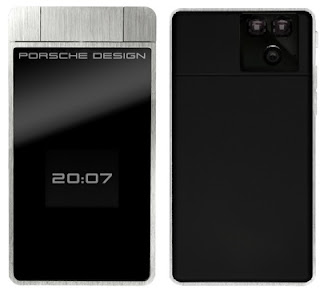can be mistaken for the Desire and sports many of the same features – including the powerful Android 2.1 Eclair with HTC Sense. Other similarities include the touch buttons and the optical trackpad, as well as fashionable design of the device itself. In a nutshell, the Wildfire promises to be a more affordable, entry level version of it predecessors, the Desire and Legend.
The HTC Wildfire is a budget Android smartphone with more than a passing resemblance to its larger cousin, the HTC Desire. Its rounded edges and rubberised, brown-grey finish are identical, and underneath the screen you'll find the Desire's optical trackpad. Here it’s paired with touch-sensitive buttons, though, while we prefer the feedback of real ones.
The key cost-cutting element is the screen. Its 3.2in display is a reasonable size, but it has a much lower 320x240 resolution, and is noticeably more pixelated as a result. That resolution is just half the pixels of an HTC Hero or Legend (320x480), and only a fraction of the Desire’s hi-res display (480x800). This means you have to zoom in further to make text legible on web pages, and photos lack crisp detail.
It still employs a capacitive touchscreen interface, which is smooth and supports multi-touch gestures. Despite the smaller screen the Wildfire lasted for 19 hours in our light usage test, around the same as the Legend and the Desire. Still, depending on how much you use 3G, WiFi and GPS, you should get a full day’s use out of a single charge.
It may be budget, but at least it’s up-to-date, using the popular 2.1 release of Android. It also has HTC's own Sense software installed, which includes user interface enhancements, a set of apps and widgets, and tweaks to Android that improve the management of Google, Microsoft Exchange and social networking accounts. Most notably, Sense can import your contacts from these accounts into its People app, and it will automatically look for duplicates and suggest contacts to merge.
The Wildfire is a little more compact than most Android smartphones, even those that also have 3.2in displays, which makes it more comfortable to carry in your pocket. Its size is another plus point when it comes to unlocking the screen, which, like on the Desire, can only be done by pressing the power button on the top edge of the phone. On the Desire, it's easiest to use your free hand to do this, while on the Wildfire you just have to shift your grip.
The 5MP camera is typical of mobile snappers, taking noisy shots that are fine for Facebook, but not half as good as those taken by a decent compact digital camera. Colour reproduction was good however, and it's good to see an LED flash on a budget smartphone, which helps to improve low-light shots.
Android 2.1 means the Wildfire has all the functionality of a more expensive handset, although its lower-resolution screen means that using it isn’t quite so much fun. If you primarily need a mobile phone, but want occasional internet, mapping, email and gaming, then this is an ideal choice. However, it’s worth spending a little extra, on HTC’s Legend or Desire, if you think you’ll be using its smartphone features more heavily. However, at only £15 a month on a generous (300 minutes and 300 texts) contract, it’s a very worthy winner of our Budget Buy award.
Here are its specifications.
GPS with AGPS
Camera: 5 mega-pixel with auto focus and LED flash
Operating System: Android 2.1 OS
G Sensor
WiFi 802.11b/g
Blueteooth 2.1+EDR
Type: Mobile phone
Model: Wildfire
HTC Sense UI
Network: GSM, Quad band
Brand: HTC
Google Mobile services
Display: 3.2-inch QVGA display touchscreen
Digital Compass
Qualcomm MSM7225 processor 525MHz
Social networking Twitter,Facebook,Flickr widgets
microSD expansion
FM Radio
3G HSPA
512MB Flash and 384MB of RAM
3.5mm headphone jack
 This is not the typical Windows Mobile phones you used to see. Get the best deal on HTC Imagio VX6975 Black now and you are saving up to $400 over the $650 retail price. You might say yeah $650 can buy me a laptop. It’s true, HTC Imagio is more like a mini laptop without the weight. And it’s a fully loaded smartphone and can be used anywhere in the world.
This is not the typical Windows Mobile phones you used to see. Get the best deal on HTC Imagio VX6975 Black now and you are saving up to $400 over the $650 retail price. You might say yeah $650 can buy me a laptop. It’s true, HTC Imagio is more like a mini laptop without the weight. And it’s a fully loaded smartphone and can be used anywhere in the world.



























































